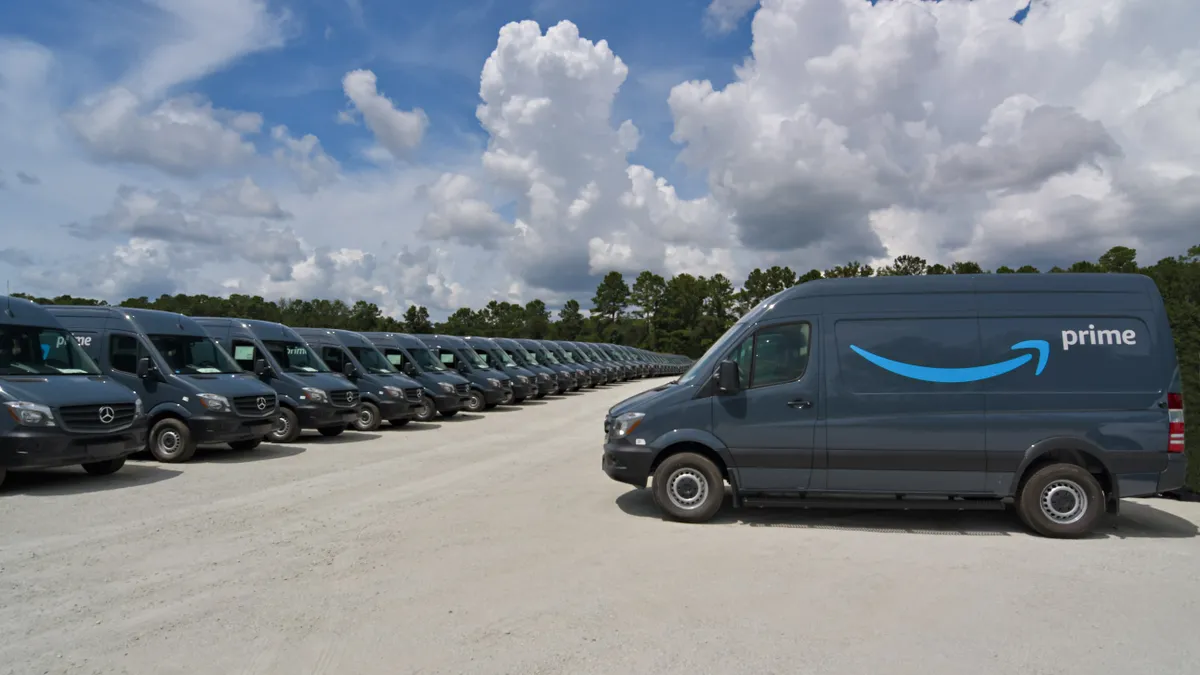Dive Brief:
-
Amazon’s U.S. Prime membership growth is showing signs of flattening, growing 8% in the past 12 months, the lowest annual rate since Consumer Intelligence Research Partners started tracking Prime in 2012, according to a Tuesday report from CIRP. The investment research firm pegs U.S. Prime membership at 97 million, which is the bulk of what CEO Jeff Bezos last year revealed is 100 million members worldwide.
-
Quarterly growth in the program is stuck at a narrow 1% to 2% for the past four quarters, including the most recent, which included Prime Day and which added just 2 million new members, according to the report.
-
Still, that has 61% of Amazon’s U.S. base in the Prime ecosystem, CIRP said, noting that those Prime customers spend more and more often: Prime customers spend an average $1,400 per year at Amazon, compared to $600 for non-members; they shop at Amazon an average of 26 times per year, compared to 14 times for non-Prime customers; they spend $55 per visit, compared to $42 for non-members, and they buy 2.2 items per visit, compared to non-members’ two items.
Dive Insight:
Amazon is reaching the limits of Prime membership growth in the U.S., leaving it and rivals to find ways to attract customers who can't or don't want to pony up $119 each year for the privilege.
Most notable is Walmart, which last year ditched its membership-based “Shipping Pass” program in favor of a flat $35 minimum on any order of eligible items, with free shipping to stores for pickup. That prompted Amazon to swiftly reduce its own order minimum for free shipping to $35, then yet again weeks later to $25.
Amazon does seem to be working to add Prime members from customer segments less likely to join. Last year the company made an overture to lower-income shoppers with a reduced Prime fee for those on government assistance programs. The company has also made it easier for college students to join, at lower fees and with the option of paying monthly, thereby forging ties with younger consumers who could end up as lifelong members.
The company may need to work those margins because not even Prime Day is scoring many new members anymore, at least compared to the sales event's early days. "The first one or two Prime Day events generated new members," CIRP Partner and Co-Founder Josh Lowitz said in a statement. "In recent years, Amazon has used the promotion to boost sales of Amazon devices and products that further bind its customers to the Amazon ecosystem.”
With Amazon Prime reaching a saturation point in the U.S., the e-commerce giant is more focused on monetizing the program rather than growing it, according to CIRP Partner and Co-Founder Mike Levin. Early Prime adopters were even more committed to Amazon than late-comers, but Prime members generally continue to be a boon to Amazon's sales, taking advantage of the program's perks, especially free two-day shipping on many items, he said.














